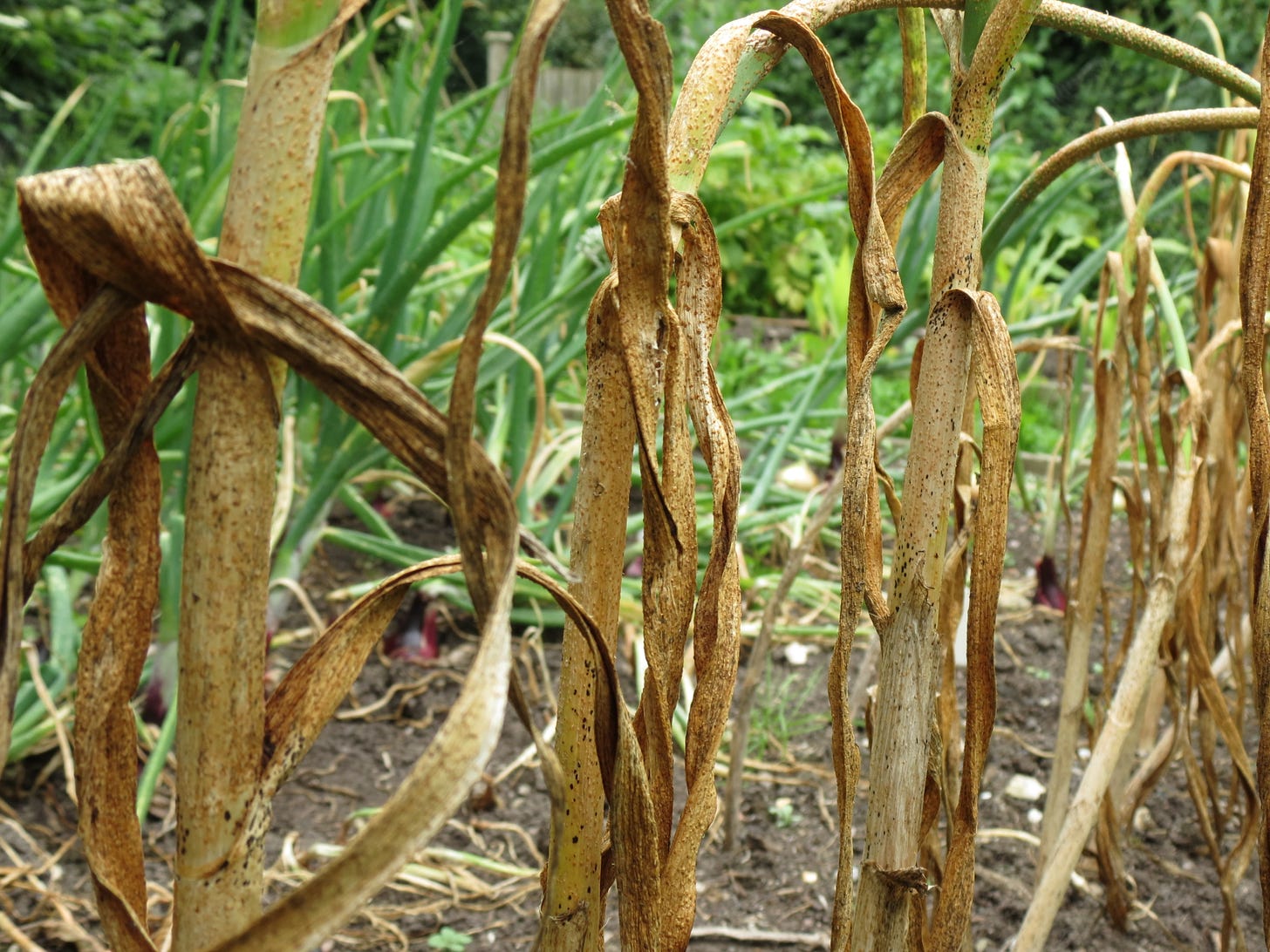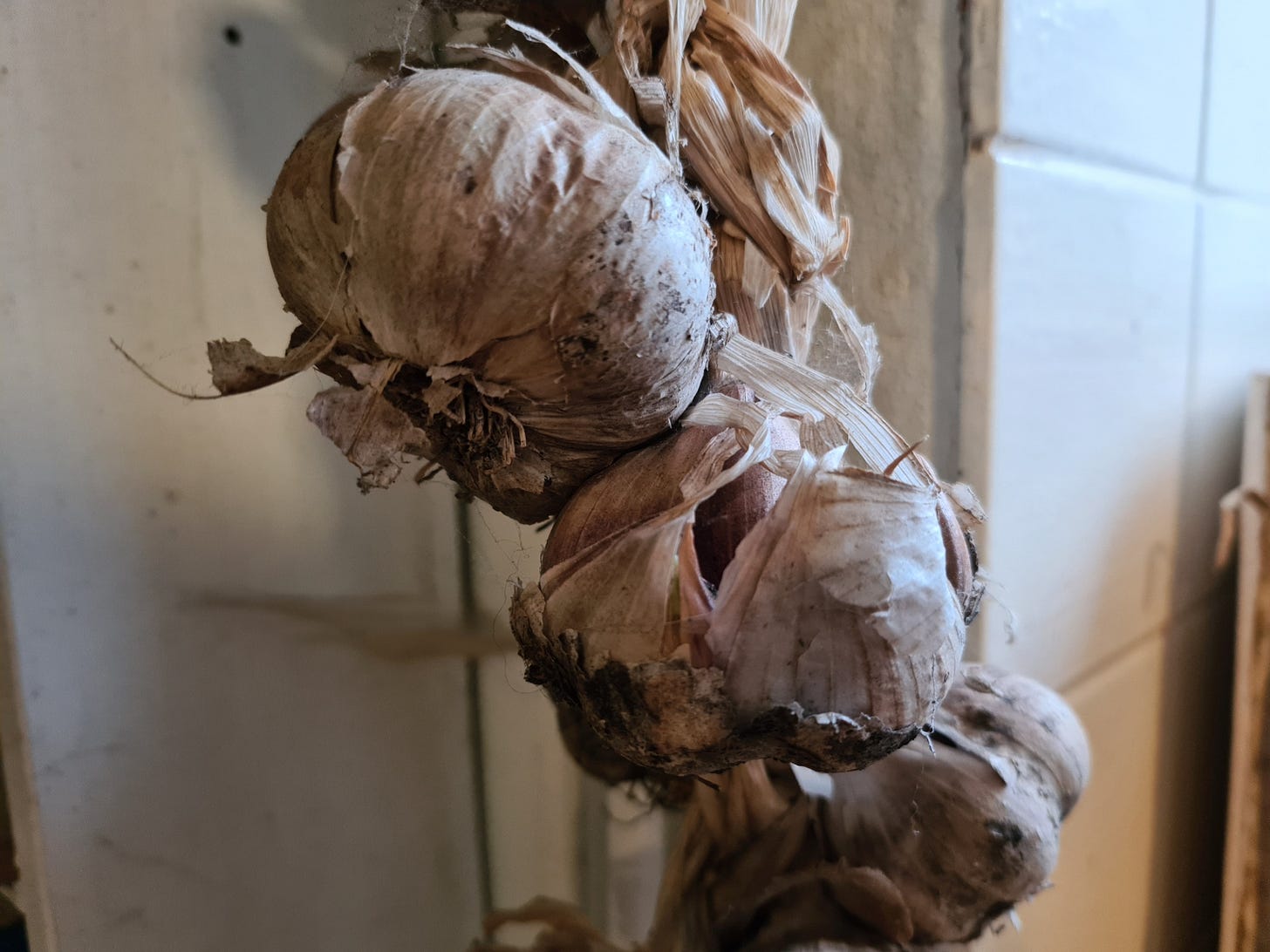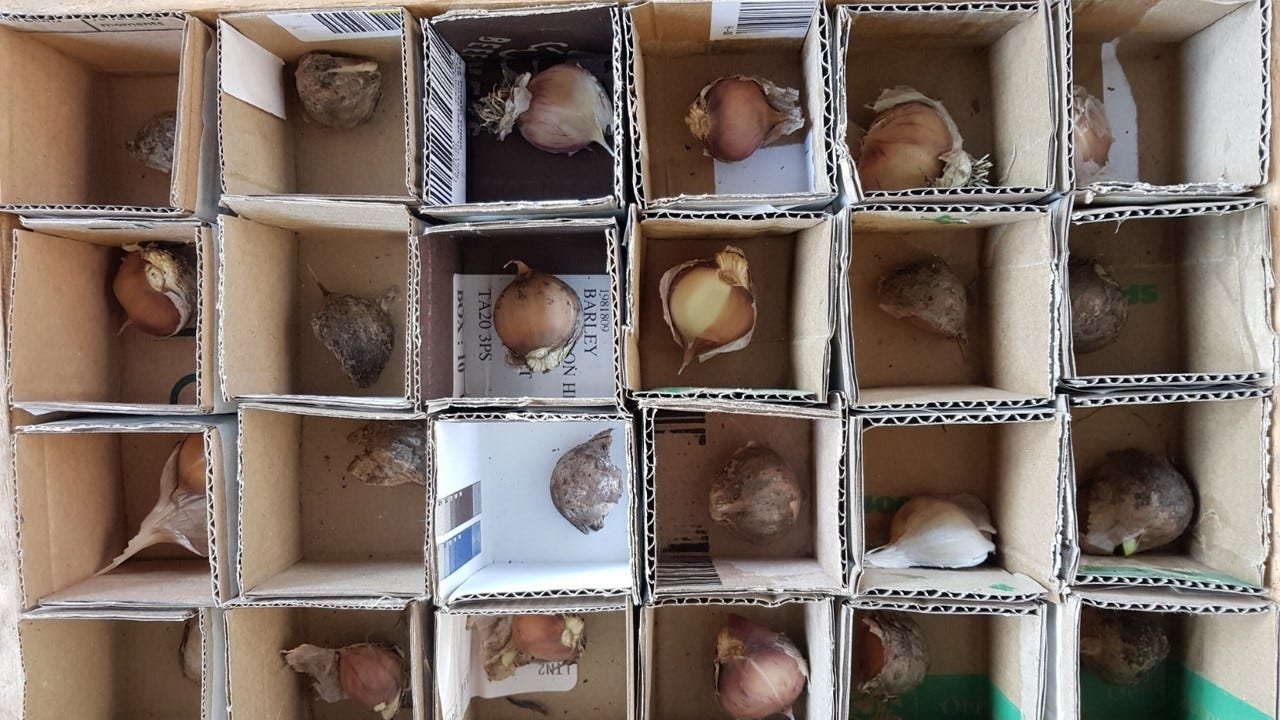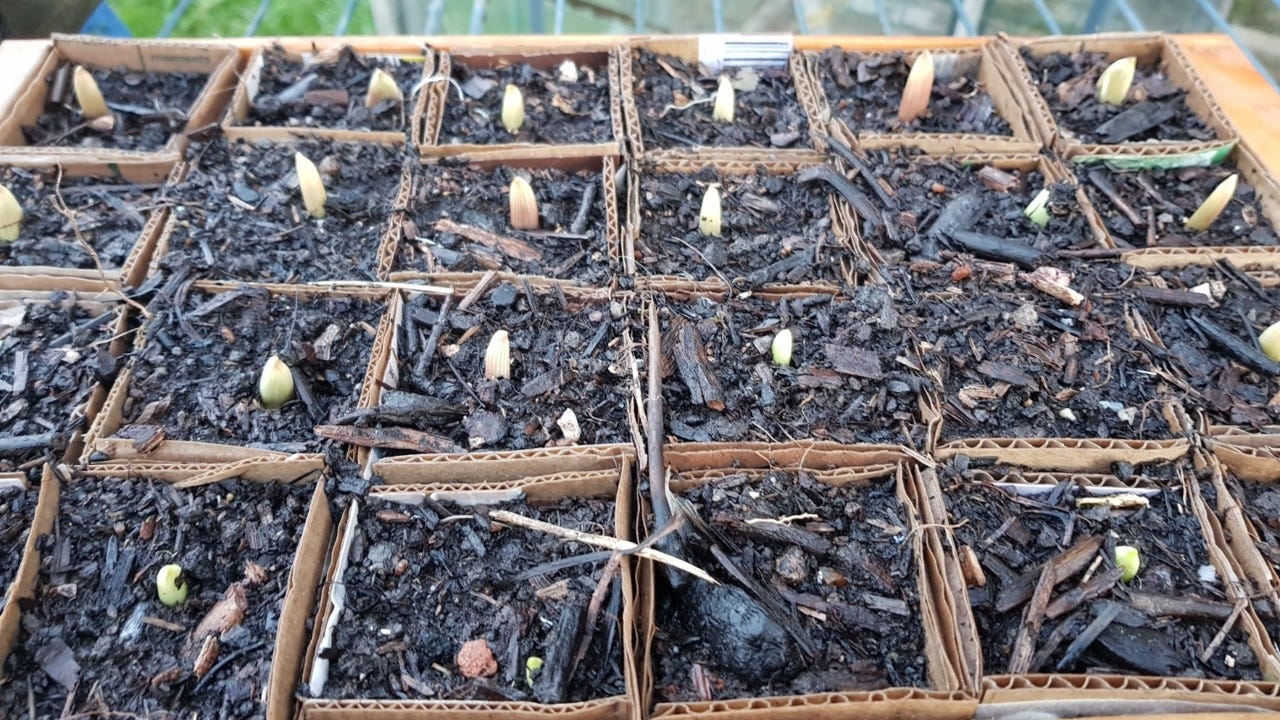People always think it’s a bit odd that I sow my garlic in pots. But there is a method in my madness.
I live in the damp, mild south-west of England where conditions are well nigh perfect for all things fungal.
That gives us some pretty spectacular wild fungi – both common (flat white field mushrooms sprout by the dozen in most fields round here and keep us well fed through autumn) and vanishingly rare. it is no coincidence that many of my Plantlife colleagues who happen to live in the south-west are also experts on waxcaps, quite the prettiest of all the wild fungi in neon pink, orange and yellow and indicator species for ancient, undisturbed grasslands (an increasingly rare habitat).
Unfortunately it also means every raindrop is pregnant with spores of one sort or another just looking for a nice damp surface on which to land and germinate, infecting my crops with blight, mildew, mould and rust.
When I’m not getting despondent after spotting yet another outbreak, I am quite fascinated by rusts. There are dozens of them, all producing the same tell-tale brownish-orange spots, streaks and smears – but each variety has its own favourite species. So your hollyhocks might get rust but that won’t infect, say, onions growing nearby. Some have extraordinarily complicated lifecycles: pear rust, for example, overwinters on a nearby juniper tree before hatching in spring to reinfect the pear tree. Remove the juniper tree and you break the cycle and your pear will no longer be troubled.
Normally I’m not too bothered by rusts here: I grow onions, chives, leeks and indeed hollyhocks without all that much trouble.
But garlic was my nemesis. I used to grow garlic very successfully outside: my garden is on free-draining, gritty chalk soil and it’s south-facing too, so exactly the conditions garlic enjoy best. But then the rust arrived: and within weeks all was a sad tatter of drooping, powdery orange. The heads stopped developing, so though I did get a harvest of sorts it was tiny, and pathetic, and really hardly worth having.
I struggled along for a few years like this, almost giving up growing garlic altogether, and then I bumped into no-dig guru Charles Dowding at a press event and – since it was on my mind at the time – started unburdening my garlic woes to him. “That’s easy to fix,” he said. “Just grow them in your greenhouse.”
It was a lightbulb moment. When you think about it, it’s obvious. Rust, like many fungal diseases, is carried in rainwater: it is literally watered onto your plants from the sky. So if you can keep the foliage dry (so the spores can’t germinate) and keep the rain off your plants, you should escape fungal diseases pretty much entirely. It’s the same idea which lies behind growing tomatoes inside greenhouses to escape the worst of tomato blight: as long as you keep the rain off, and water at the feet of the plants so the foliage stays dry, they stay unblemished and healthy.
Now, keeping an outdoor crop like garlic out of the rain is not without its challenges. First of all, garlic needs a good spell of chilling if it’s to split into cloves: if it’s too warm while it germinates (for example, if you sow it too late) it won’t get the three weeks at 7°C (44°F) it needs. So you can’t just plant your garlic cloves in the greenhouse border, as it’s warmer in a greenhouse so you can’t guarantee that all-important frost.
So I have devised a slightly convoluted, but nonetheless very effective system. I sow my garlic cloves into little biodegradable pots just before Christmas, and pop them onto a shelf outside where the frosts can get at them freely.
There they stay, in the rain and the snow, until about February. At this point they are handsome, sturdy little seedlings some 15cm high, often with very enthusiastic root systems (don’t worry if you break some as you move the pots out of the tray – they’ve got plenty to spare).
Plant at the same depth they were in their pots, about 15cm apart in the greenhouse and then water them in – always taking care to water around the base of the plant, without splashing the leaves.
If you don’t have a greenhouse, a cold frame would do the same job; you could even try covering them with a glass barn cloche in the open garden, though this might be a little more hassle as you’d have to remove the cloches each time you water (and you would have to water right through the season, as of course with the glass is keeping off the rain as it’s meant to, things can get a bit dry underneath).
Garlic adores the baking it gets through spring and summer in a sunny, warm greenhouse, as well as the drier soil, and the plants grow tall, strong and lush, more often than not reaching full maturity by the longest day on 21st June. I have harvested the best crops I’ve ever grown by treating them like this – and not a single rust spot in sight.
So – over to you. How’s your garden growing? Any conundrums you’ve been scratching your head over? Ask me anything in the comments below!






Do you struggle with space in the greenhouse though? I plant the tomatoes in the greenhouse soil in April and chillies and aubergines in May.